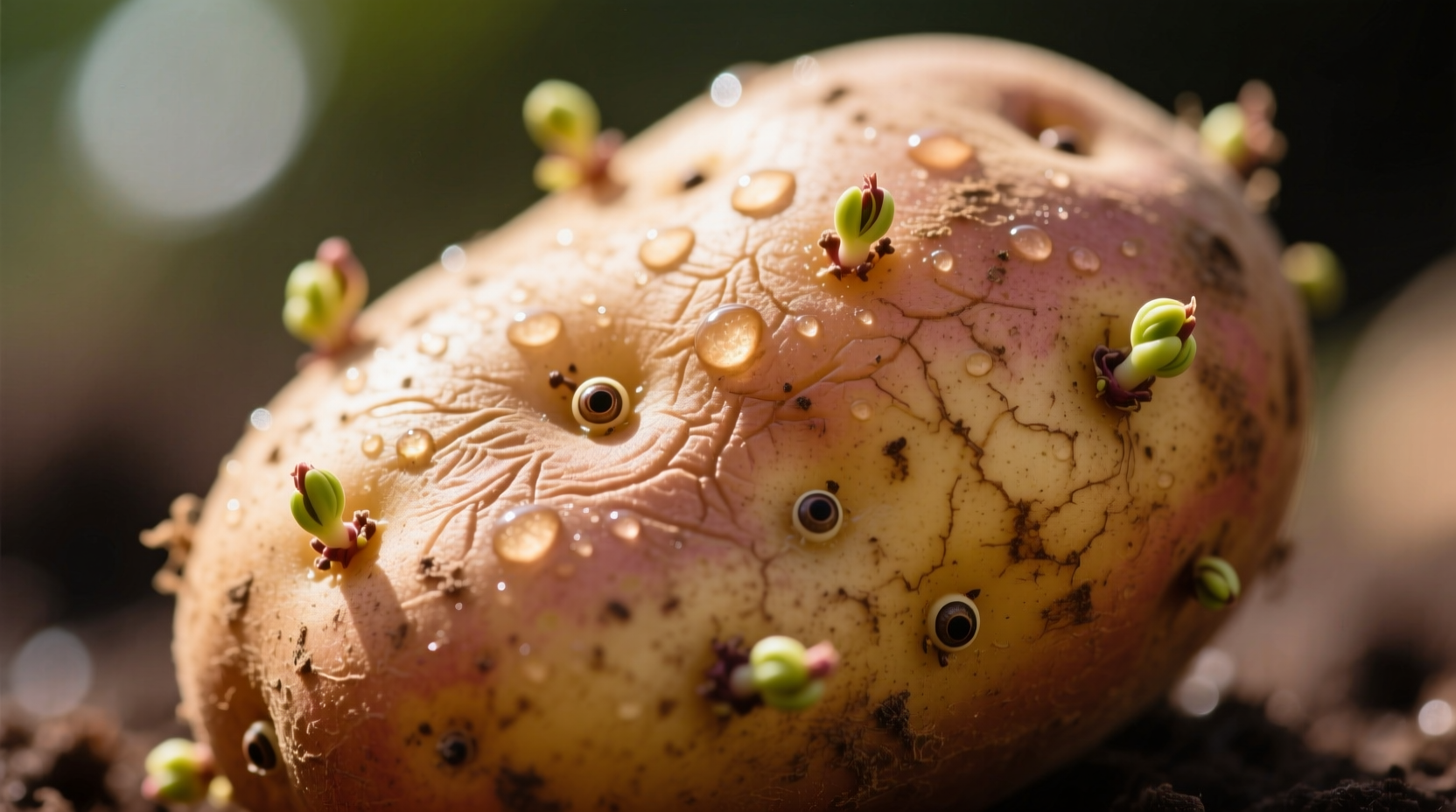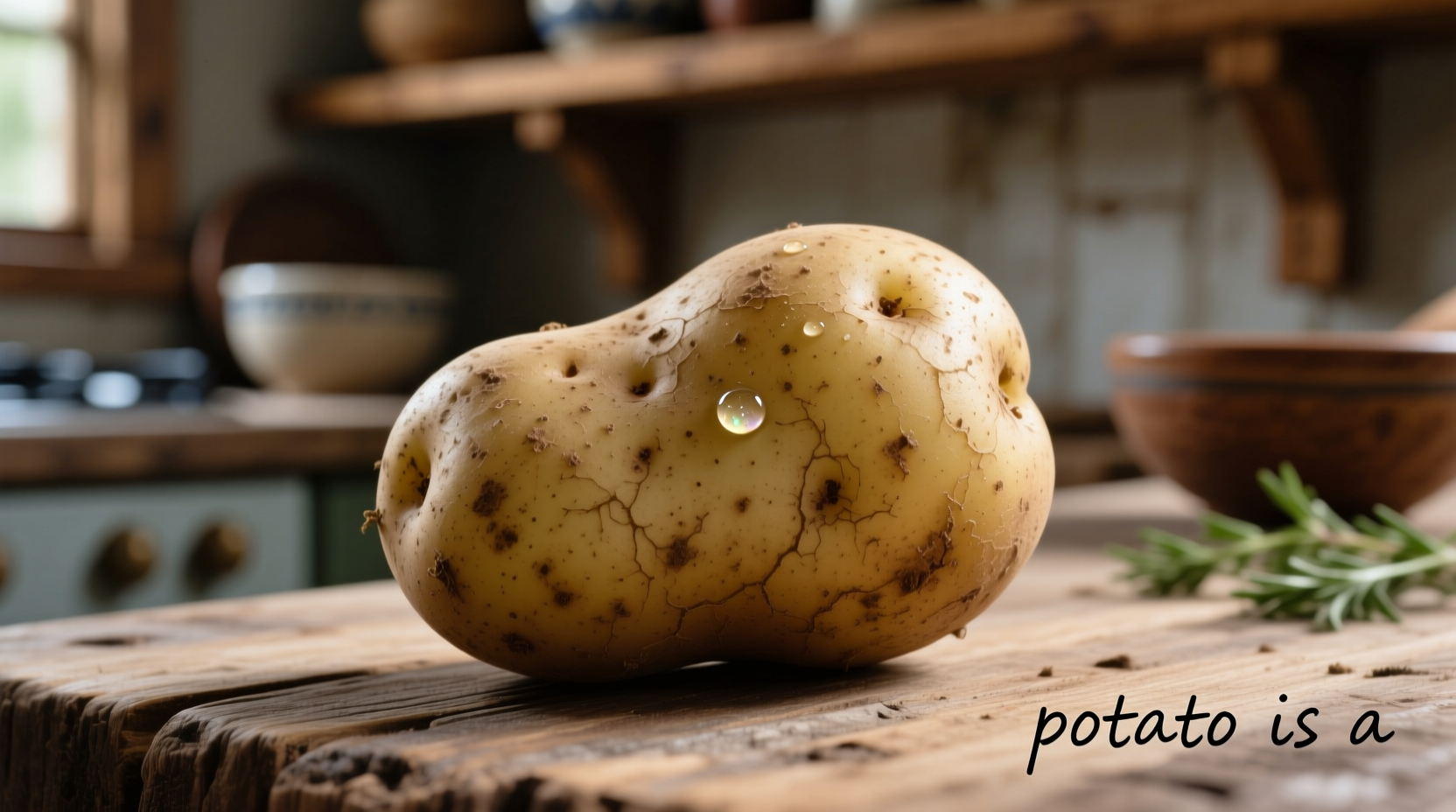Confused about whether a potato qualifies as a vegetable, fruit, or something entirely different? You're not alone. This comprehensive guide cuts through the confusion with scientifically accurate information about potato classification, nutritional value, and culinary applications—giving you clear answers you can trust.
Botanical Reality: What Exactly Is a Potato?
When someone asks "potato is a" what, they're usually expecting a simple vegetable classification. The reality is more nuanced. Botanically speaking, potatoes are tubers—swollen underground stems that store nutrients for the plant. This distinguishes them from true root vegetables like carrots or beets.
The potato plant (Solanum tuberosum) belongs to the nightshade family (Solanaceae), which also includes tomatoes and eggplants. What we eat is the plant's modified stem structure that grows underground, containing buds ("eyes") from which new plants can sprout.
| Classification Type | True Vegetables | Potato |
|---|---|---|
| Botanical Category | Roots, leaves, or flowers | Tuber (modified stem) |
| Plant Part | Carrot (root), spinach (leaf) | Underground stem storage |
| Reproduction Method | Seeds | Eyes (buds) on tuber |
| Nutrient Storage | Varies by plant part | Starch for plant energy |
Why Potato Classification Matters in Your Kitchen
Understanding that potato is a tuber rather than a root vegetable affects how you cook and store them. Unlike root vegetables that grow directly from the plant's root system, potatoes:
- Require different storage conditions (cool, dark, ventilated spaces)
- React differently to cooking methods due to their starch composition
- Have unique sprouting behaviors that impact food safety

Nutritional Profile: More Than Just Carbs
Despite common misconceptions about potatoes being "empty calories," they offer significant nutritional benefits when prepared properly. According to USDA FoodData Central, one medium potato (150g) with skin provides:
- 26 grams of carbohydrates (including 3 grams of fiber)
- 45% of your daily vitamin C needs
- 27% of your daily vitamin B6 requirements
- Significant potassium content (more than a banana)
- Naturally fat-free and cholesterol-free
The nutritional value changes dramatically based on preparation method. Baking or boiling with skin intact preserves nutrients, while frying significantly increases calorie density.
Historical Journey of the Humble Potato
Understanding potato is a staple food requires examining its remarkable journey:
8,000-5,000 BCE: First domesticated in the Andes mountains of South America
1536: Spanish conquistadors bring potatoes to Europe
1719: Potatoes introduced to North America in Londonderry, New Hampshire
1770s: Antoine-Augustin Parmentier promotes potatoes in France
1845-1852: Irish Potato Famine devastates Ireland's population
Today: Third most-consumed food crop worldwide after rice and wheat
Common Misconceptions Debunked
Let's address frequent questions about potato is a what:
"Is potato a vegetable?"
Culinarily, yes—potatoes are treated as vegetables in meal planning. Botanically, no—they're tubers. The USDA classifies them as vegetables for dietary purposes because they provide similar nutritional benefits to vegetable servings.
"Is potato a root?"
No. True roots (like carrots) lack nodes, internodes, and buds. Potatoes have "eyes" (buds) and develop from underground stems called stolons, making them stem tubers.
"Is potato a fruit?"
No. Fruits develop from the ovary of a flowering plant and contain seeds. Potatoes are vegetative structures that store energy for the plant.
Practical Applications for Home Cooks
Knowing that potato is a tuber helps you select the right varieties for different cooking methods:
- Starchy potatoes (Russet): Best for baking, mashing, and frying
- Waxy potatoes (Red, Fingerling): Hold shape well for salads and roasting
- All-purpose potatoes (Yukon Gold): Versatile for most cooking methods
Proper storage extends shelf life significantly. Keep potatoes in a cool, dark place with good ventilation—never refrigerate, as cold temperatures convert starch to sugar, altering flavor and causing darkening when cooked.
When Classification Actually Matters
While most home cooks don't need botanical precision, understanding that potato is a tuber becomes crucial in specific contexts:
- Gardening: Planting eyes rather than seeds for propagation
- Food safety: Recognizing green spots indicate solanine (a toxic compound)
- Dietary planning: Accounting for higher carbohydrate content compared to non-starchy vegetables
- Allergies: Nightshade sensitivity affects some individuals
For most culinary purposes, treating potatoes as vegetables works perfectly fine. The botanical distinction mainly matters for agricultural, nutritional, or scientific contexts.
Conclusion: Embracing the Potato's Unique Identity
So, to definitively answer the question "potato is a" what: it's a tuber, a specialized underground stem that serves as the plant's energy storage system. This understanding enhances your cooking, storage, and nutritional awareness without diminishing potatoes' rightful place as a kitchen staple worldwide.











 浙公网安备
33010002000092号
浙公网安备
33010002000092号 浙B2-20120091-4
浙B2-20120091-4